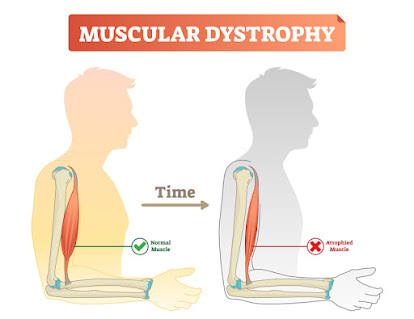Muscular dystrophy is a group of genetic disorders that cause progressive weakness and degeneration of the skeletal muscles. The condition is caused by mutations in genes that are responsible for the production of proteins needed for muscle function.
There are several types of muscular dystrophy, each with its own set of symptoms and progression. The most common forms include Duchenne muscular dystrophy, Becker muscular dystrophy, and Limb-girdle muscular dystrophy.
Symptoms of muscular dystrophy can vary depending on the type and severity of the disorder, but may include muscle weakness, muscle wasting, difficulty walking, and difficulty with fine motor tasks. As the condition progresses, individuals may experience difficulty breathing and difficulty climbing stairs.There is currently no cure for muscular dystrophy, but treatment options are available to help manage symptoms and slow the progression of the disease. Physical therapy, occupational therapy, and speech therapy can help to improve muscle strength and function. Medications such as corticosteroids can also be used to slow muscle deterioration. In some cases, surgery may be necessary to correct deformities or to improve mobility.
Research on muscular dystrophy is ongoing, and there are several promising developments in the field. Gene therapy and stem cell therapy are being studied as potential treatments for the condition.
It's important to seek out a specialist if you suspect you or a loved one may have muscular dystrophy. Early diagnosis and treatment can help to slow the progression of the disease and improve quality of life. Support groups and organizations can also provide valuable resources and support for individuals and families affected by muscular dystrophy.
In conclusion, muscular dystrophy is a group of genetic disorders that cause progressive weakness and degeneration of the skeletal muscles. There is no cure, but treatment options are available to help manage symptoms and slow the progression of the disease. Physical therapy, occupational therapy, and speech therapy can help to improve muscle strength and function. Medications such as corticosteroids can also be used to slow muscle deterioration. Research is ongoing and there are several promising developments in the field. Early diagnosis and treatment can help to slow the progression of the disease and improve quality of life.


